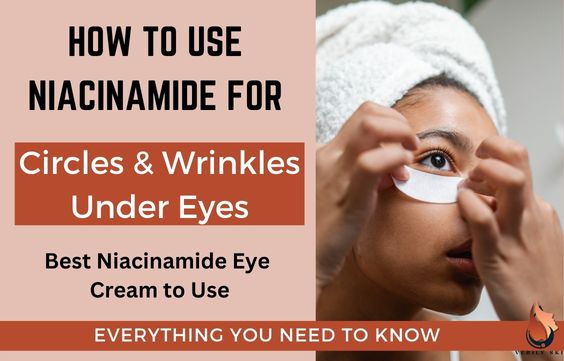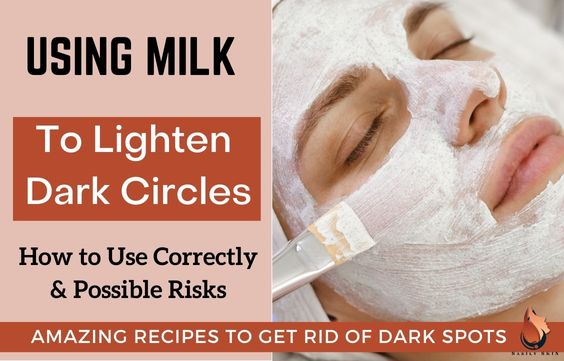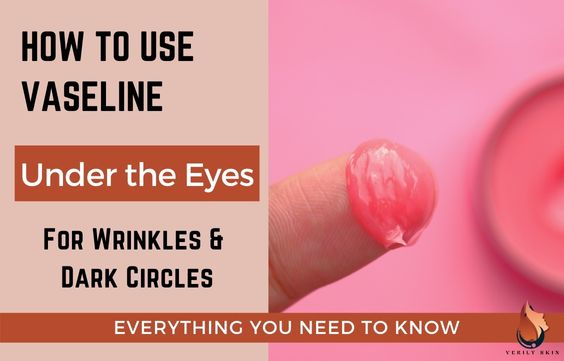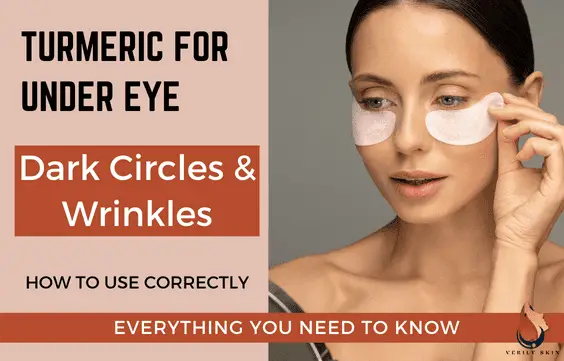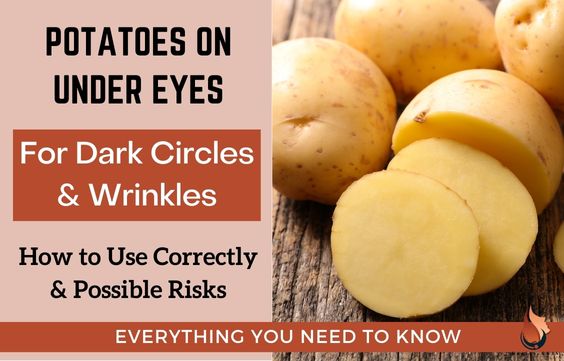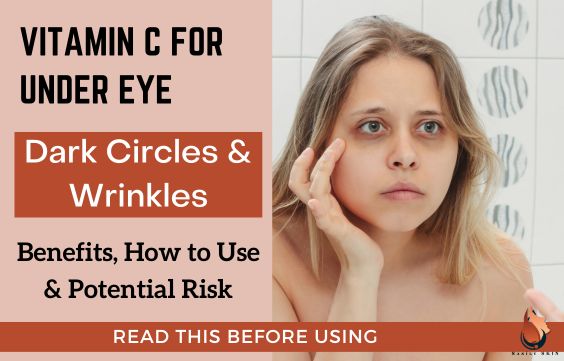Can You Use Hydroquinone for Under-Eye Circles & Wrinkles
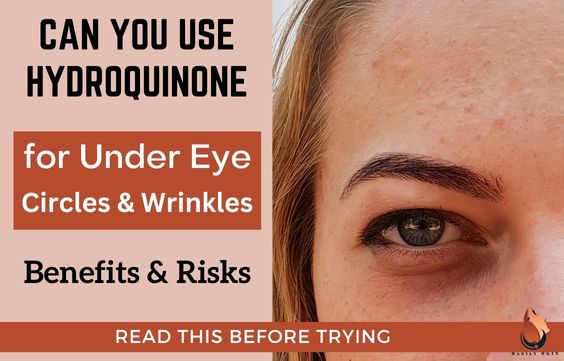
Hydroquinone is the standard medical, topical treatment for post-inflammatory hyperpigmentation, melasma, freckles, sun spots, etc.
However, it is usually much stronger than your more common skincare ingredients like Vitamin C or niacinamide. Therefore, much debate occurs about whether you can safely use hydroquinone for under-eyes.
Can You Safely Use Hydroquinone For Under-Eyes
Some dermatologists encourage the use of hydroquinone on the under-eyes with strict guidance while others recommend that you avoid using it in that area.
There is much debate among skincare professionals about whether the benefits outweigh the risks of using hydroquinone on the under eyes. So, the advice you receive will most likely differ based on who your doctor is.
However, I recommend that you consult a doctor and let them explain the risks and the benefits to you. When you have listened and thought about it, make an informed decision based on how well you know your skin and what you think is in your best interest.
To explore your options to lighten dark circles check out my article on The 10 Medical & Home Remedies For Under Eye Dark Circles
If Used, How Would Hydroquinone Get Rid Of Under-Eye Circles & Wrinkles
Hydroquinone lightens the skin by inhibiting melanin synthesis. However, it is not known to treat wrinkles.
It does this by inhibiting the action of tyrosinase, which is an enzyme that is vital in the synthesis of melanin in the skin.
This means that the pigment in the skin will no longer be reproduced and deposited in the skin every time new skin cells are made and layered. Instead, as time goes by, the pigmented cells will be replaced with non-pigmented cells. Eventually, the entire area of skin will be lighter.
To read about other great, but cautious treatments for dark under-eyes, check these articles out:
How to Use Vitamin C for Under Eye Circles & Wrinkles
How to Use Kojic Acid for Under-Eye Circles & Wrinkles
Tretinoin For Under Eye Circles & Wrinkles: What to Know
Using Azelaic Acid for Wrinkles & Circles Under the Eyes
How Long Would Hydroquinone Take To Lighten Under-Eyes
How fast hydroquinone would work for under-eye darkness would depend on a variety of factors that include:
- The cause of your under-eye dark circles
- Whether your skin reacts badly to the treatment
- How often hydroquinone is used
- The concentration that is used
- How much of it is applied
- Other skin care practices that help or inhibit its effect
- Your skin type
Related Articles:
Using Ice For Under-Eye Circles: Is it Safe, Pros & Cons
Witch Hazel for Under Eyes- Dark Circles, Bags & Puffiness
Toothpaste For Dark Under-Eye Circles & Wrinkles
Alternative Treatments
For milder treatment alternatives for your under-eyes, check these articles out:
Niacinamide for Dark Spots & Wrinkles Under the Eyes
Milk to Treat Dark Circles: Will it Work & How to Use
Risks & Side Effects of Using Hydroquinone For Under-Eyes
Generally, on other parts of the body, hydroquinone is well tolerated. However, when used on the face and other sensitive areas, there are a few possible side effects that you should be concerned about:
- Increased Dryness (especially if you already have dry skin)
- Itchiness
- Irritation
- Allergic or Irritant Contact Dermatitis
- Redness
- Inflammation (swelling, pain or tenderness, redness, & warmth in and around the area)
- Stinging
- Pregnancy Category C – One dose of topical hydroquinone is absorbed systemically to a degree of 35 to 45%. Therefore, It is advised to limit exposure due to the significant absorption even though recent studies have not found an increased risk of abnormalities or harmful consequences in pregnant women. Additionally, because it is yet unknown whether this medication is safe for nursing moms and their babies, breastfeeding women are encouraged to avoid using it.
While the topical side effects are concerning on the face, they can be especially worrisome under the eyes. Keep in mind that the skin under your eyes is very thin and very sensitive.
For this reason, many dermatologists will tell you to skip this treatment in that area altogether. The risk of damaging the skin under your eyes and causing irritation and possible effects to your eyes themselves if the situation gets worse, or if the cream gets into your eyes may seem like too much trouble.
However, other dermatologists have figured out a workaround so that you can still use this treatment in a way that is as safe as possible.
Related Articles:
How to Use Turmeric for Under Eye Dark Circles & Wrinkles
How to use Honey for Under Eye Wrinkles & Dark Circles
Essential oils for Under-Eye: Puffy Circles & Wrinkles
How To Use Hydroquinone For Under-Eyes
For starters, I strongly recommend that you consult a dermatologist to guide you on how best to use hydroquinone under your eyes safely.
Here are a few tips:
- When using hydroquinone, you will need to consider your skin type, the cause of your dark circles, what concentration will be best for you, whether you will need to use it with another product to counter possible side effects, and how often you should use it.
- Hydroquinone is available over the counter in strengths up to 2%. Anything stronger will require a prescription. Prescription-strength hydroquinone is available up to 4%. You should not use hydroquinone treatments that are more concentrated than 4%.
- Even if you consult a dermatologist, I recommend (and they may agree) starting with the lowest possible strength of hydroquinone that you can find. Test patch the treatment on another sensitive area of your skin to see how your skin will react. If you have no negative reaction, sparingly start applying it under your eyes. A little will go a very long way.
- Remember to avoid getting the cream too close to your eyes. A good rule of thumb is to keep your application at least ½ inch away from your lower lash line and avoid applying it to your eyelids. If the cream is greasy, or if your skin becomes sweaty or oily, it would be too easy for the cream to move around and get into your eyes.
Related Article – Lemon for Under-Eye Circles & Wrinkles – Benefits & Risks
Video: Dr. Rupa Wong – Is Hydroquinone Safe Around Your Eyes? Eye Doctor Explains
- Start by applying hydroquinone 2-3 times per week (once per day at night). This will give your skin time to adjust to the treatment and prevent irritation. If you do not experience any negative effects, you can gradually increase your application to once every day.
- Do not use hydroquinone under your eyes or anywhere else if you are going out into the sun. I recommend avoiding it during the day altogether. However, even though you are only applying it at night, you should always apply sunscreen during the day, especially if you are going out.
- Also keep your under-eyes well moisturized, during the day and even during the night (before or after applying your hydroquinone). This will help your skin to protect itself and also might make the hydroquinone work better while avoiding side effects.
- Avoid using other lightening or harsh agents on your under eyes while using hydroquinone. These can be things like vitamin C, salicylic acid, retinol, etc. (especially in high concentrations). Keep your routine simple and stick to a simple moisturizer. Click here to read Can You Use Salicylic Acid Under the Eyes – Shocking Truth
- If you notice any side effects, no matter how mild, wash your skin and contact your dermatologist. If the side effects are very bad, or your eyes become red or swollen, seek medical attention at the nearest hospital right away.
Related Articles:
Using Potatoes For Under-Eye Dark Circles & Wrinkles
Cucumbers On Eyes: Benefits & Side Effects- What to Know
How To Find Hydroquinone Products
Even if you are using low-strength hydroquinone, I recommend purchasing your creams from a reputable pharmacy, skin clinic, or other trustworthy institutions.
Hydroquinone is not FDA-approved for OTC use. Therefore, to avoid issues with concentrations, negative effects, and general safety concerns, you should not order hydroquinone from online sources or buy them from retail outlets that are not reputable.
You can purchase hydroquinone from pharmacies and clinics with a prescription from your doctor.
Please note that as of 2022, Tri-Luma is the only FDA-approved medication that contains hydroquinone. This prescription drug called has been licensed for the short-term treatment of dark patches brought on by moderate-to-severe facial melasma. Use of Tri-Luma should only be done under the guidance of a trained medical practitioner.
Related Articles –
Chamomile Tea Bags On Eyes: Benefits & How To Use
How to use Vaseline for Wrinkles & Circles Under the Eyes
Sources
1- Hydroquinone – StatPearls – NCBI Bookshelf
2- Hydroquinone: Uses, Safety, Side Effects, OTC Products, Alternatives
3- Hydroquinone – American Osteopathic College of Dermatology (AOCD)
4- Hydroquinone dosing, indications, interactions, adverse effects, and more
6-FDA works to protect consumers from potentially harmful OTC skin lightening products

